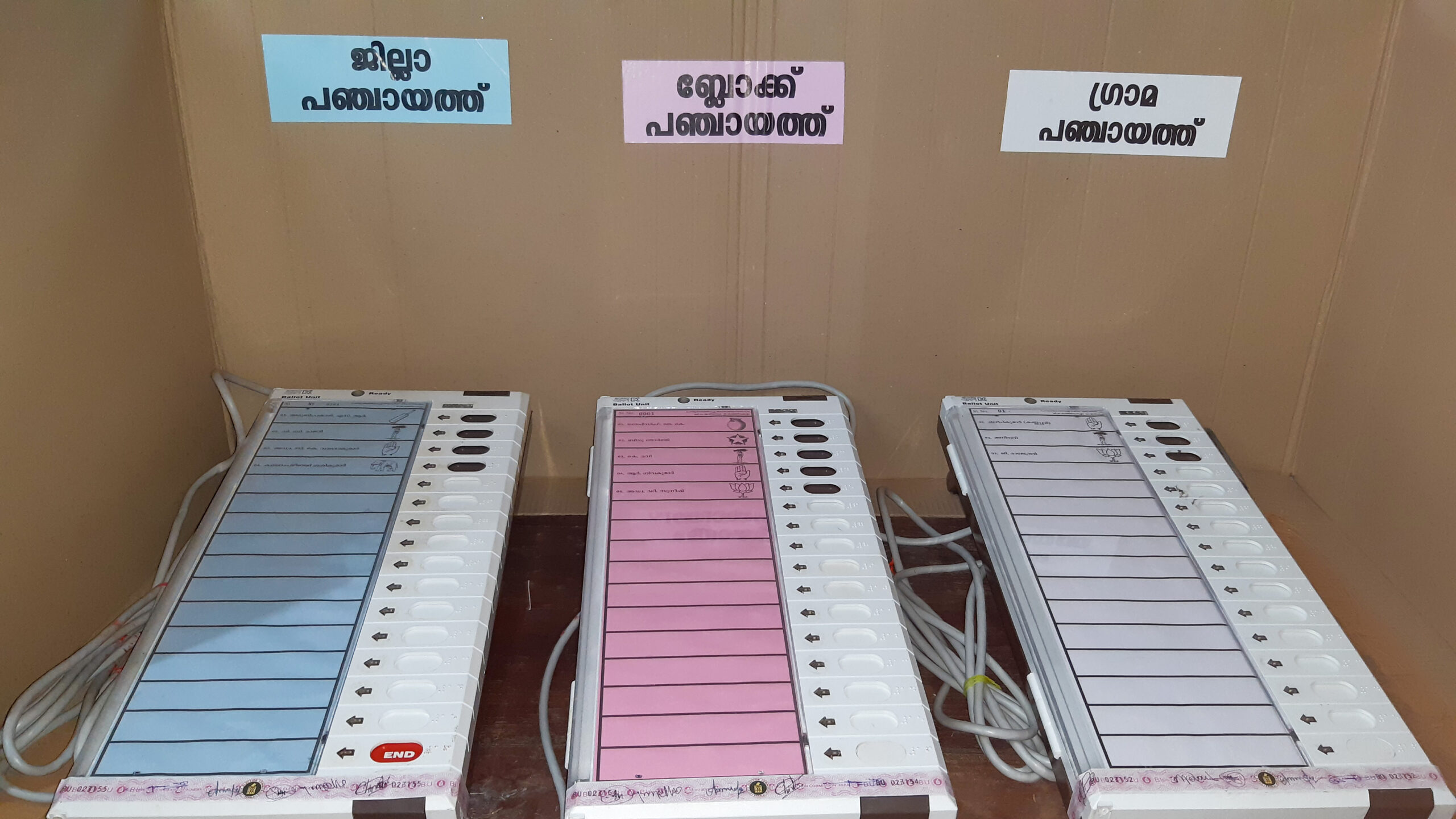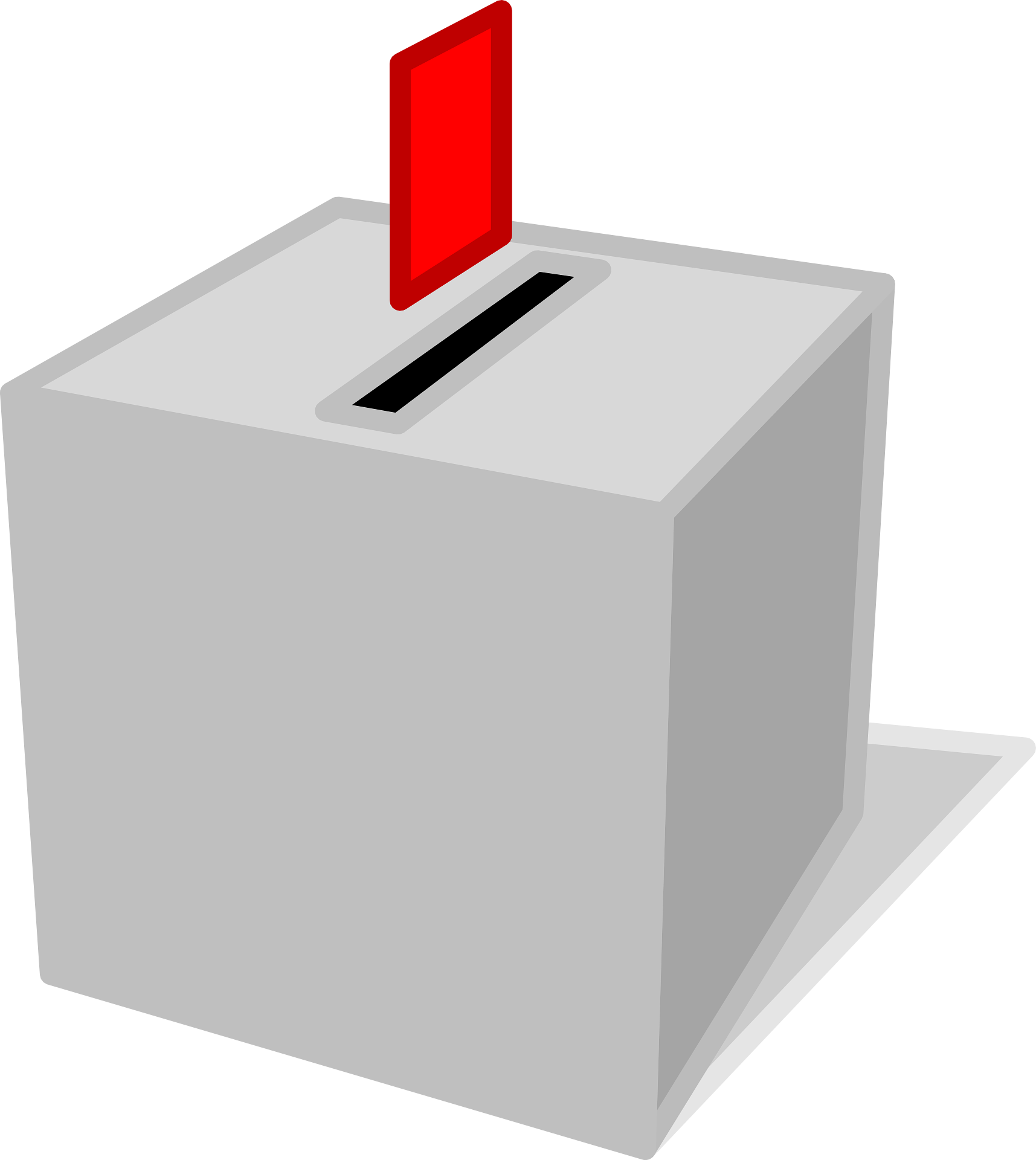“The Pros and Cons of EVMs and Ballots in Indian Elections” explores the advantages and disadvantages of two significant voting systems used in Indian elections. The blog dives into the merits of Electronic Voting Machines (EVMs), highlighting their efficiency, accuracy, and cost-effectiveness, while acknowledging concerns regarding vulnerability to hacking and lack of transparency. It also discusses the strengths of traditional paper ballots, including their transparency, familiarity, and psychological satisfaction for voters, alongside drawbacks such as time consumption and potential human errors. By analyzing these aspects, the blog aims to shed light on the ongoing debate surrounding these voting methods, emphasizing the importance of a fair and reliable electoral process in India.
The Pros and Cons of EVMs and Ballots in Indian Elections
India has been using electronic voting machines (EVMs) since 2004. EVMs are seen as a more efficient and secure way to vote than the traditional paper ballot system. However, there have been concerns about the security of EVMs, and some people believe that paper ballots are still the more reliable way to vote.
Here are some of the pros and cons of EVMs:
Pros:
Efficiency and Speed: One of the key advantages of EVMs is their ability to expedite the voting process. EVMs eliminate the need for manual counting and reduce the time taken to declare results. This leads to quicker formation of governments and ensures a smoother democratic transition.
Accuracy and Reliability: EVMs are designed to minimize human errors that can occur during manual counting and data entry. They have built-in features such as invalid vote detection, multiple-level checks, and secure storage of data, which enhance the accuracy and reliability of the voting process.
Cost-effectiveness: EVMs can be cost-effective in the long run. Although there is an initial investment in procuring and maintaining the machines, they can be used for multiple elections, reducing the recurring expenses associated with printing and distributing paper ballots.
Environmentally Friendly: EVMs significantly reduce paper usage, leading to a positive impact on the environment. With millions of eligible voters in India, the use of EVMs contributes to conservation efforts by reducing deforestation and energy consumption associated with paper production.
EVMs are faster and more efficient than paper ballots.
They are more secure against fraud and tampering.
They are easier to transport and count.
They can be used in remote areas where paper ballots are difficult to deliver.
Cons:
India has been using electronic voting machines (EVMs) since 2004. EVMs are seen as a more efficient and secure way to vote than the traditional paper ballot system. However, there have been concerns about the security of EVMs, and some people believe that paper ballots are still the more reliable way to vote.
As a democratic nation with a diverse electorate, India has a long history of conducting elections. The process of casting votes and counting them accurately is of utmost importance to ensure a fair and transparent electoral system. Over the years, India has used both Electronic Voting Machines (EVMs) and traditional paper ballots to facilitate elections. In this blog, we will explore the pros and cons of both systems and delve into the ongoing debate surrounding their usage in Indian elections.
Vulnerability to Malfunction and Hacking: Critics of EVMs argue that these machines are susceptible to technical glitches, tampering, and hacking. Concerns have been raised regarding the security of EVMs, especially in terms of unauthorized access to the software and the potential for manipulation of results.
Lack of Transparency: The technology behind EVMs is complex, and the process of casting and counting votes is not easily understandable to the average voter. This lack of transparency raises doubts and questions about the integrity of the electoral process, leading to concerns over the credibility of election outcomes.
Limited Verification: Unlike paper ballots, where voters physically mark their choices, EVMs provide no tangible evidence of the votes cast. This makes it difficult to conduct a manual recount or audit if the need arises, potentially undermining the confidence of voters in the accuracy of the results.
EVMs are more expensive than paper ballots.

They are more complex and can be difficult to understand.
There have been concerns about the security of EVMs, and some people believe that they can be hacked.

Here are some of the pros and cons of paper ballots:
Pros:
Transparency and Verifiability: Paper ballots offer a high level of transparency, as voters physically mark their choices. This allows for easy verification during the counting process, enabling political parties and observers to scrutinize the results and ensure fairness.
Familiarity and Inclusivity: Paper ballots have been used for a long time in India and are familiar to a significant portion of the population, especially in rural areas. They do not require specialized knowledge or technology, making them more inclusive for all segments of society, including those with limited access to technology.
Psychological Satisfaction: Many voters find comfort and trust in physically marking their choices on paper. The tactile experience of casting a vote using a ballot can provide a sense of psychological satisfaction and a stronger connection to the democratic process.
Paper ballots are more familiar to voters.
They are easier to verify and recount.
They are more resistant to hacking.
Cons:
Time-consuming and Resource-intensive: Counting paper ballots manually is a time-consuming process, especially in constituencies with large voter populations. It requires substantial human resources, increasing the chances of errors and delays in declaring results. Moreover, the printing, transportation, and storage of paper ballots can be logistically challenging and costly.
Prone to Human Errors: Manual counting of paper ballots is susceptible to human errors, such as misinterpretation of voter intent, accidental misplacement, or miscounting of ballots. These errors can potentially impact the outcome of an election and undermine the faith of voters in the electoral system.
Scope for Electoral Fraud: While paper ballots can offer transparency, they also leave room for electoral fraud, such as ballot stuffing or manipulation during transportation or storage. Proper safeguards and robust monitoring mechanisms are essential to mitigate these risks, but they may not always be foolproof.
Paper ballots are slower and less efficient than EVMs.
They are more susceptible to fraud and tampering.
They are more difficult to transport and count.
So, which voting system is better for India?
There is no easy answer to this question. EVMs have some clear advantages over paper ballots, but they also have some potential drawbacks. Ultimately, the decision of which voting system to use is a complex one that must be made on a case-by-case basis.
In recent years, there have been a number of allegations of EVM tampering in Indian elections. In 2017, the Supreme Court of India ordered the Election Commission of India (ECI) to introduce a Voter Verifiable Paper Audit Trail (VVPAT) system in all elections. The VVPAT system allows voters to verify that their vote has been cast correctly.
The ECI has said that the VVPAT system will increase the transparency and accountability of the electoral process. However, some people believe that the VVPAT system is not enough to guarantee the security of EVMs. They argue that the VVPAT system only provides a limited audit trail, and that it is still possible for EVMs to be hacked.
The debate over EVMs is likely to continue for some time. It is a complex issue with no easy answers. However, it is important to have a public discussion about the pros and cons of EVMs so that we can make informed decisions about the future of voting in India.
In conclusion, there are both pros and cons to EVMs and paper ballots. The best voting system for India is likely to be a combination of the two. The VVPAT system is a step in the right direction, but it is not enough on its own. We need to continue to explore ways to make our electoral process more secure and transparent.
The use of EVMs and paper ballots in Indian elections presents a dynamic landscape where advantages and disadvantages coexist. While EVMs offer efficiency, speed, and cost-effectiveness, concerns about security, transparency, and verifiability persist. On the other hand, paper ballots provide a tangible and transparent voting process, but face challenges of time consumption, resource management, and vulnerability to human errors. Striking a balance between these two systems is crucial for fostering a robust and trusted electoral process that upholds democratic values and meets the diverse needs of Indian voters.
As technology evolves and public expectations change, it is essential for policymakers, election authorities, and citizens to engage in open discussions to address the concerns associated with EVMs and paper ballots. Continued research and development in voting technologies, along with robust monitoring mechanisms, can lead to innovative solutions that enhance transparency, security, and public confidence in the democratic process. Ultimately, the goal is to ensure that elections in India remain free, fair, and reflective of the will of the people.
Frequently Asked Questions (FAQ):
- What is an EVM, and how does it work in Indian elections?
An Electronic Voting Machine (EVM) is a device used for casting and counting votes in Indian elections. It is a standalone unit with buttons representing different candidates. Voters select their preferred candidate by pressing the corresponding button, and the vote is electronically recorded and stored securely within the EVM.
- What are the advantages of using EVMs in Indian elections?
There are several advantages of using EVMs, including faster and more efficient vote counting, reduction in human errors during counting, elimination of invalid votes due to over-voting or wrong marking, increased secrecy of the voting process, and the ability to handle a large number of voters effectively.
- Are there any concerns or disadvantages associated with EVMs?
While EVMs offer many benefits, some concerns have been raised. Critics argue that EVMs can be vulnerable to tampering or hacking, potentially compromising the integrity of the election. Additionally, technical malfunctions, lack of transparency in the counting process, and the digital divide in some areas of the country are also considered as drawbacks.
- What is the traditional ballot system, and why is it still relevant in Indian elections?
The traditional ballot system involves using paper ballots where voters mark their preferred candidate’s name with a pen or pencil. The ballots are manually counted to determine the election results. The ballot system is still relevant because it is perceived as more transparent and less prone to electronic manipulation. It also ensures inclusivity, especially in areas with limited technology infrastructure.
- What are the advantages of using ballots in Indian elections?
The use of ballots provides transparency and allows voters to physically see and verify their vote. It also offers a backup record in case of any disputes or recounts. Furthermore, the traditional ballot system is more accessible for voters who may not be familiar with electronic devices or those who prefer a tactile voting experience.
- Are there any drawbacks to using the ballot system in Indian elections?
The manual counting of paper ballots can be a time-consuming and labor-intensive process, leading to delayed election results. The possibility of human errors in counting and the challenges associated with handling large volumes of paper ballots are also disadvantages of the ballot system. Additionally, the costs involved in printing and distributing ballots can be substantial.
- Are there any efforts to address the concerns related to EVMs or ballots?
The Election Commission of India continuously works towards addressing concerns related to both EVMs and the ballot system. It implements various security measures to safeguard EVMs from tampering and ensures transparency through rigorous testing and certification. Additionally, the Election Commission takes steps to enhance the training of election officials and improve the counting process for ballots to minimize errors.